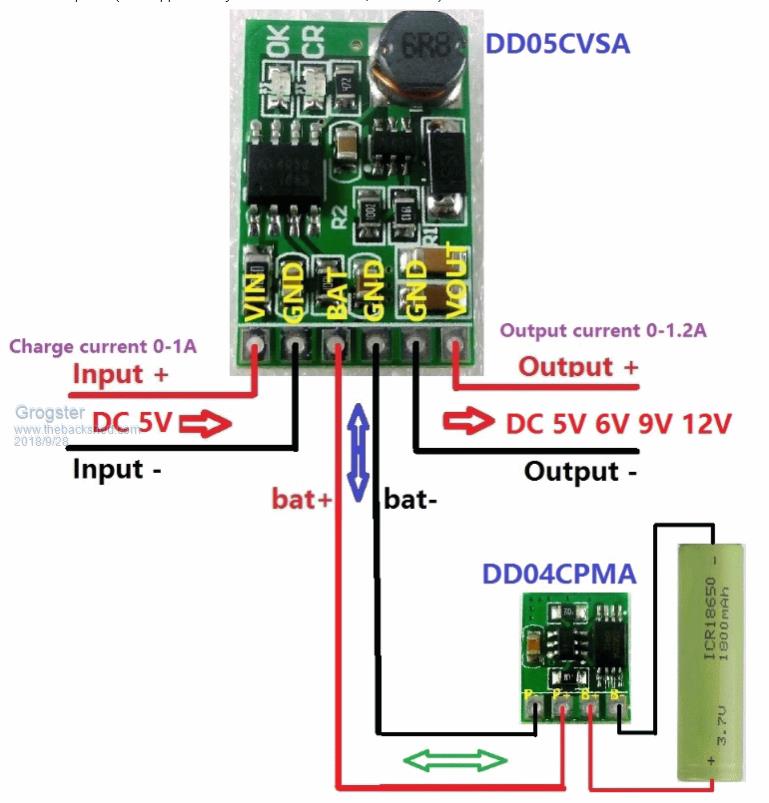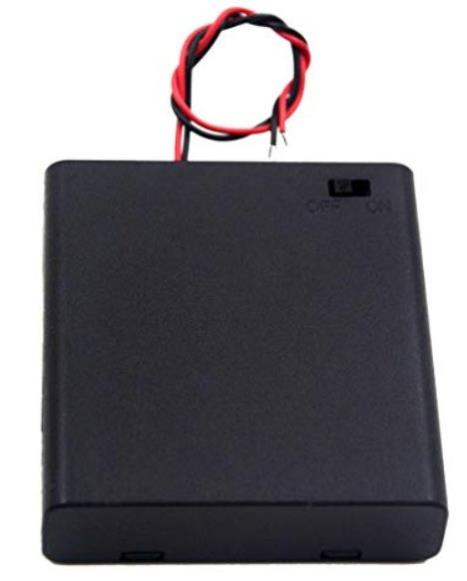
|

|
Forum Index : Microcontroller and PC projects : LiPO batteries....
| Author | Message | ||||
Grogster Admin Group Joined: 31/12/2012 Location: New ZealandPosts: 9610 |
Hi all.  I am looking at replacing some of my old NiCd and NiMH 9v batteries with some LiPO batteries. Some people say they are like a bomb if you get them wet, but this seems to largly be BS, as forum threads such as this one explain the reasons why they are usually pretty safe - even if submerged in water. The other thing I have read, is that they are really touchy about cell-voltage, and so you have to keep a close watch on the seperate cell voltages to ensure a balanced charge. I am looking at some 7.4v LiPO's such as these I note that all the 3.7v ones just have two wires for discharge/charge, but that multi-cell ones have a discharge connector, and a smaller set of wires and a connector, which I guess is for the charging and monitoring of the seperate cells. The battery I linked to above, I expect consists of two cells, each being 3.7v, and I expect that the little three-way connector is ground, the 7.4v end of the cells, and the connection in the middle of the two cells - that way, you can monitor the voltage on each of the two cells, correct? LiPO's are NOT something I ever use, but I have wanted to for ages, as they have much better capacity then NiCd or NiMH, are lighter, and the smaller ones are now very affordable. What experience do members here have with LiPO's, and do the members have any recommendations for taking care of and using these kinds of batteries, safety concerns, charging concerns etc, etc, etc? Smoke makes things work. When the smoke gets out, it stops! |
||||
palcal Guru Joined: 12/10/2011 Location: AustraliaPosts: 1993 |
Hi Grogs, I use them, and use these for protection against over discharge and for charging.2 cell Li-Po protector You can get these boards for other numbers of cells. The cells are nominal 3.7v but can't be discharged below about 2.7v or charged above about 4.2v. I charge them with a solar panel. "It is better to be ignorant and ask a stupid question than to be plain Stupid and not ask at all" |
||||
| matherp Guru Joined: 11/12/2012 Location: United KingdomPosts: 10310 |
My advice FWIW is to stay away from pouch cells and use 18650 cells. Buy from a reputable supplier - you can even get them with protection built in. These cells are used by all of the power tool manufacturers as well as for automotive batteries (in their hundreds!). Battery holders are available to make connection easy. |
||||
Grogster Admin Group Joined: 31/12/2012 Location: New ZealandPosts: 9610 |
Hi folks.  @ Paul - Thanks for the link. @ matherp - 18650 is too big. I need something that is no bigger then a 9v battery, so I can use it as a kind of drop-in replacement. I wonder if you can get something along the lines of 18450 or something.....  However, I have found this very interesting module which uses ONE 3.7v cell, and combines a charger and a boost converter, so you can use a 3.7v cell to produce 5v, 6v, 9v or 12v with a corresponding drop off in the current you can suck from it. If you add another cheap module , you can add battery protection aswell. I'm quite impressed with the boost-converter idea, as single 3.7v cells are much easier to get, smaller, cheaper.....  EDIT: Wikipedia tells me you can get an 18450 which would be just about perfect. They won't be as common as 18650, but C'est La Vie. Jaycar might even stock something close. More research..... Smoke makes things work. When the smoke gets out, it stops! |
||||
| WhiteWizzard Guru Joined: 05/04/2013 Location: United KingdomPosts: 2944 |
Hi G, What resultant output voltage (i.e. for your circuit) are you needing? IF it is 5v then I would simply use a quality (branded) Portable Battery Pack. There are many out there available, and because they are 'mass produced', then they are very reasonable cost. I use them a lot for MM circuits, and they effectively have the charging-cicuit built in. So feed it 5v from something like a RPi PSU (cheap, and good quality) to charge the 'battery pack'; and connect the USB output from the 'Battery Pack' into your circuit. I have used 1 cell LiPos before and then boosted to 5v. This made it easier for 'Coloumb Counter' circuits to monitor the state of charge. The output voltage is NOT a representation of state of charge!. If you do decide to play at the component level, I strongly advise a dedicated chip for the charger, over voltage, under voltage, and cut-off. Water can be an issue; but short circuit is a far more serious thing and needs to be avoided at all cost. Result can be burn, fire, or explosion - not BS! WW |
||||
Grogster Admin Group Joined: 31/12/2012 Location: New ZealandPosts: 9610 |
WW - good idea! Had not thought of those 5v things. YES, the input voltage is 5v, with on-board regulators for 3v3. I will have a serious look into those 5v USB charger battery things - they are everywhere, but I never thought of using one of those....  Smoke makes things work. When the smoke gets out, it stops! |
||||
| matherp Guru Joined: 11/12/2012 Location: United KingdomPosts: 10310 |
Lots of options out there |
||||
| CaptainBoing Guru Joined: 07/09/2016 Location: United KingdomPosts: 2170 |
I am such a grouch... I am just not going to play with a battery/cell that requires this level of monitoring/control. As KeepIS says... "It's all too hard"  In truth I only have a few battery applications and even then it is supplementary power. I built three beer barrel sterilization probes for a brewery and each has a pair of cheap-as-chips 8.4v PP3 NiMh that have to stay up for about half an hour 8 times a day, between times they are connected to a shore supply. They have been going years and the circuitry around them is child's play |
||||
Grogster Admin Group Joined: 31/12/2012 Location: New ZealandPosts: 9610 |
Well, I have to admit that I have also been thinking THAT too. While I like the LiPO for it's current density vs weight etc, there is a-lot of monitoring needed with those cells. Rough and ready NiMH 9v batteries are pretty good as a power source for 28-pin MM projects, when paired with some LDO regulators, and the CPU SLEEP command. I may yet just stick with the rechargable 9v batteries and be done with it. Decisions, decisions.  Smoke makes things work. When the smoke gets out, it stops! |
||||
| lizby Guru Joined: 17/05/2016 Location: United StatesPosts: 3378 |
Not to hijack this thread, but it's already forked to a degree--is there a 3-AA or 4-AA NiMH box with plug-in for 5V phone/r-pi charger and charging control? Something like the standard 4-AA box with switch, but with a little more in the way of smarts?  PicoMite, Armmite F4, SensorKits, MMBasic Hardware, Games, etc. on fruitoftheshed |
||||
| Volhout Guru Joined: 05/03/2018 Location: NetherlandsPosts: 5089 |
Grogster, I have been using lipo batteries like these ones you describe for over 10 years, and only once had one that vented (not exploded, but it vented). I use them to power electric RC airplanes, as does everyone in my club. The connector pinout is as you describe : black = 0, middel pin is centre of the 2 cels). The connector is for balancing the battery while charging. Lipo cells are very sensitive to overcharging. But they have almost zero selfdischarge. I would avoid high tempertures with LIPO's (don't use them to power a circuit that is mounted on your rooftop in high summer). Yes, there are stories fo exploding batteries, mainly in cell phones. But understand those are few stories per year while 100 milion phones are build each year. If you decide to use LIPO's, please invest also in a LIPO charger. For the small batteries you use, you don't need a expensive one. It should fit the battery size (in your proposel 1000mA 2s (2s meaning 2 cels in series). Something like this one: https://www.banggood.com/IMaxRC-IMax-B3-Pro-1_5A-Balance-Compact-Charger-for-2S-3S-Lipo-Battery-p-1223206.html?rmmds=sea rch&cur_warehouse=CN Advantage is that these small chargers use the balance connector (the 3 pin) to charge (and balance), so you can solder/connect the power pins (the 2 pin connector) to your circuit or power switch. (no unplugging/plugging of 9V batteries). Balancing is only used during charging, So no monitoring needed there. Only thing you may want to monitor is the battery voltage. When lower than 6V (3V/cell) , you need to recharge. Success PicomiteVGA PETSCII ROBOTS |
||||
| Azure Guru Joined: 09/11/2017 Location: AustraliaPosts: 446 |
@Grogster I have used them but only because of their power / weight density over NiMH. TBH I think the overcharge/overtemp/short circuit/undervoltage type protection while useful is part of the evolving change to get better performance/life from the batteries. It just happens to coincide with the commercial availability of LiPo and other new battery chemistries. A lot of these same rules should apply to older chemistries but were not cost effective at the time and it has not been widely retro-developed to match older chemistries. I remember in my old RC days the better charge controllers individually charged and monitored each cell even though they were NiCad cells, it was mainly used for serious competition like for high end players like competitive pylon racing where they needed to squeeze every ounce out of the batteries charge. It is important not the discharge them too low so charge/cell controllers like this are very cheap to add to cells to provide all the protection you need. as Volhout says they are available for multiple cell sizes. The one thing to remember is with a LiPo dischasrge protection the battery will slowly drop and then goto zero volts (or very close to) once the discharge protection kicks in. |
||||
| Tinine Guru Joined: 30/03/2016 Location: United KingdomPosts: 1646 |
FWIW, as a Explore 100 user, I keep an eye on the available Click modules and they have some interesting power management offerings: Click boards |
||||
| The Back Shed's forum code is written, and hosted, in Australia. | © JAQ Software 2025 |